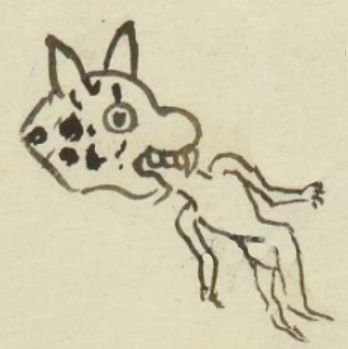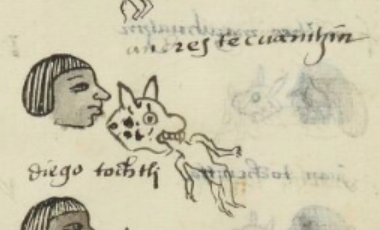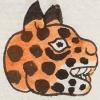Tecuanitzin (MH532r)
This black-line drawing of the simplex glyph for the personal name Tecuanitzin (“People-Eating Animal,” in the reverential, which is attested here as a man’s name) shows a spotted wild animal, much like a jaguar {ocelotl) in profile, facing toward the viewer's right. It has the head of a human being in its mouth. The body, shown in a frontal view, is apparently naked, although not very detailed. His posture is one of vulnerability. The animal's ears are up, its eye is open, and its teeth are visible. The canine tooth is especially long and sharp.
Stephanie Wood
andres tecuanitzin
Andrés Tecuanitzin
Stephanie Wood
1560
Jeff Haskett-Wood
animales, jaguares, morder, cuerpo

tecuani, a wild animal; a biter of people, https://nahuatl.wired-humanities.org/content/tecuani
cua, to bite/eat, https://nahuatl.wired-humanities.org/content/cua
Animal Feroz (en el reverencial)
Stephanie Wood
Matrícula de Huexotzinco, folio 532r, https://www.loc.gov/resource/gdcwdl.wdl_15282/?sp=143&st=image
This manuscript is hosted by the Library of Congress and the World Digital Library; used here with the Creative Commons, “Attribution-NonCommercial-ShareAlike 3.0 License” (CC-BY-NC-SAq 3.0).





